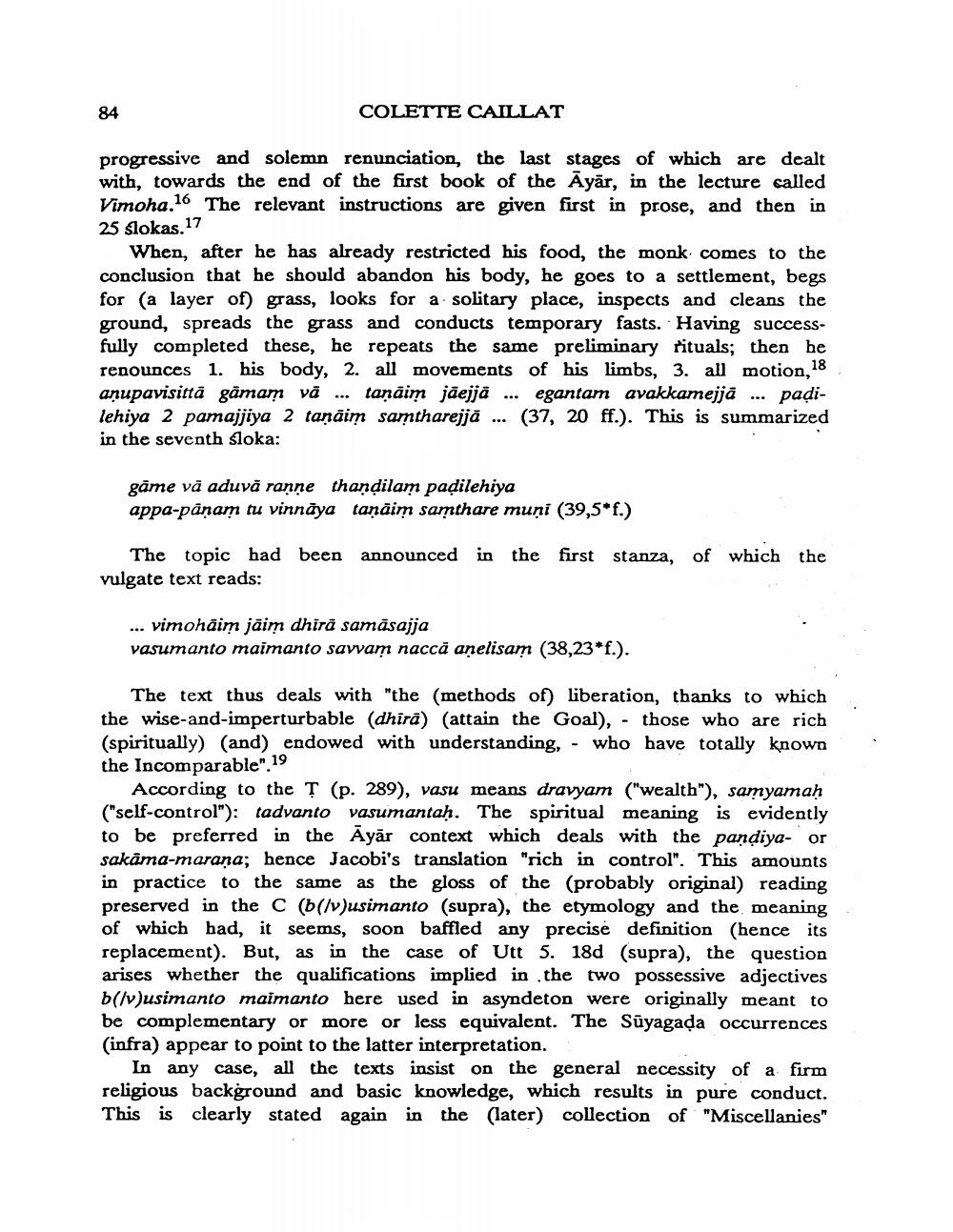________________
84
COLETTE CAILLAT
progressive and solemn renunciation, the last stages of which are dealt with, towards the end of the first book of the Āyār, in the lecture called Vimoha.16 The relevant instructions are given first in prose, and then in 25 Slokas. 17
When, after he has already restricted his food, the monk comes to the conclusion that he should abandon his body, he goes to a settlement, begs for (a layer of) grass, looks for a solitary place, inspects and cleans the ground, spreads the grass and conducts temporary fasts. Having successfully completed these, he repeats the same preliminary rituals; then be renounces 1. his body, 2. all movements of his limbs, 3. all motion, 18 anupavisitta gämam và ... tanaim jāejjā ... egantam avakkamejjā ... padilehiya 2 pamajjiya 2 tanāim samtharejjā ... (37, 20 ff.). This is summarized in the seventh sloka:
game vă aduva ranne thandilam padilehiya appa-panam tu vinnāya tanaim samthare muņi (39,5*f.)
announced in the first stanza, of which the
The topic had been vulgate text reads:
... vimohāim jāim dhira samāsajja vasumanto maimanto savvam naccă anelisam (38,23*f.).
The text thus deals with "the methods of) liberation, thanks to which the wise-and-imperturbable (dhira) (attain the Goal), - those who are rich (spiritually) (and) endowed with understanding, - who have totally known the Incomparable". 19
According to the T (p. 289), vasu means dravyam ("wealth"), samyamah ("self-control"): tadvanto vasumantaḥ. The spiritual meaning is evidently to be preferred in the Ayār context which deals with the pandiya- or sakāma-marana; hence Jacobi's translation "rich in control". This amounts in practice to the same as the gloss of the (probably original) reading preserved in the C (b(lv)usimanto (supra), the etymology and the meaning of which had, it seems, soon baffled any precise definition (hence its replacement). But, as in the case of Utt 5. 18d (supra), the question arises whether the qualifications implied in the two possessive adjectives b(lv)usimanto maimanto bere used in asyndeton were originally meant to be complementary or more or less equivalent. The Süyagada occurrences (infra) appear to point to the latter interpretation.
In any case, all the texts insist on the general necessity of a firm religious background and basic knowledge, which results in pure conduct. This is clearly stated again in the later) collection of "Miscellanies"




